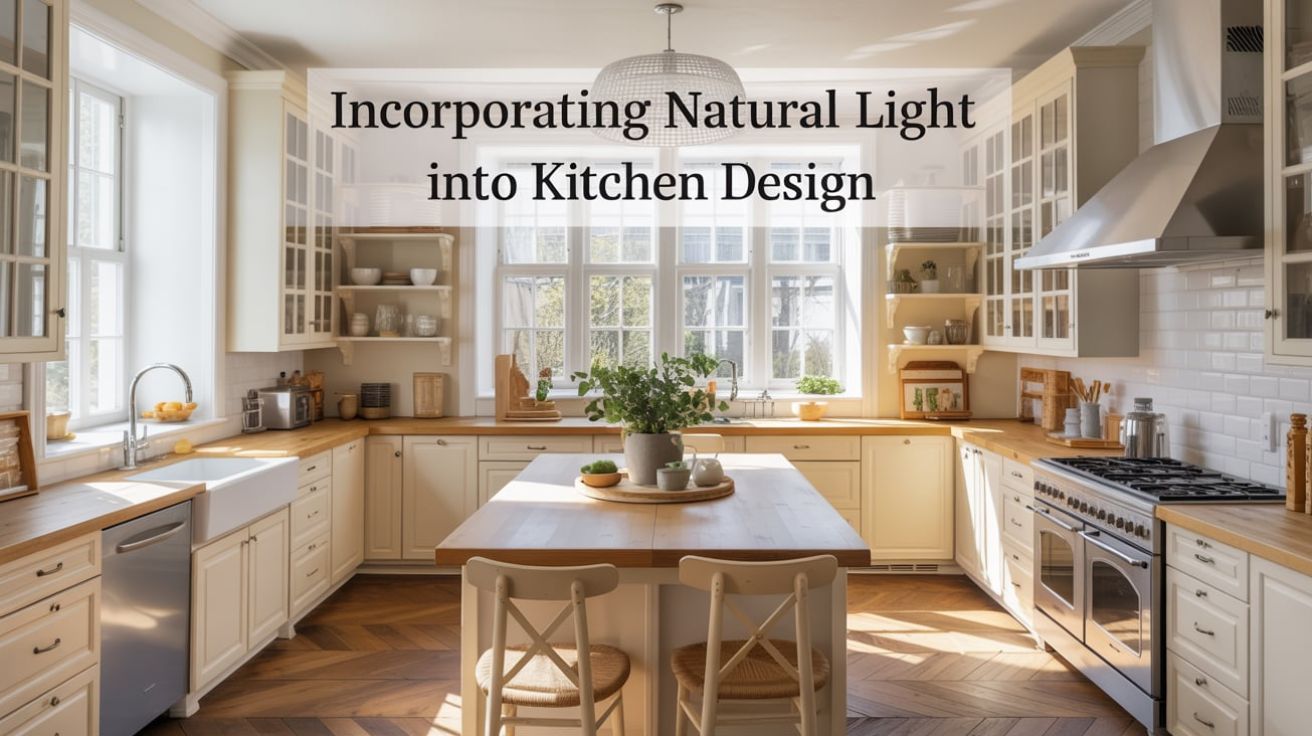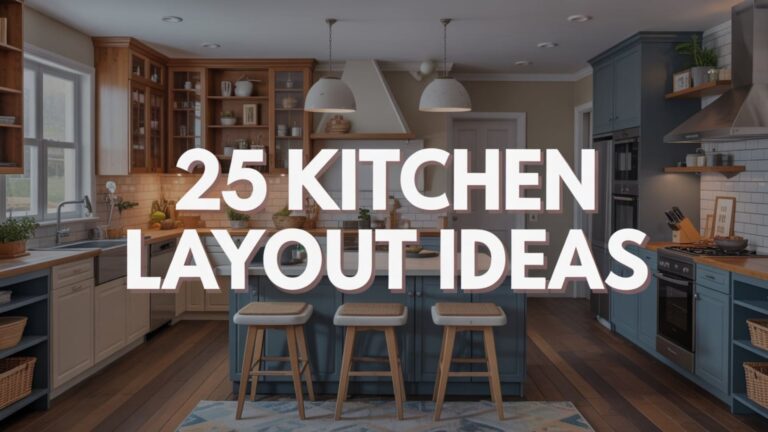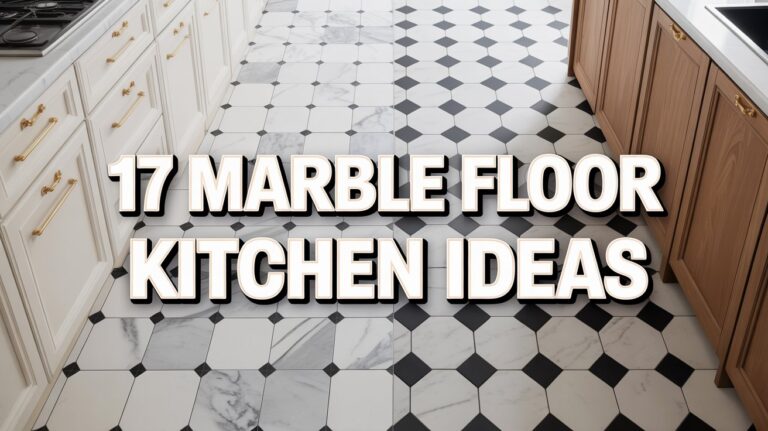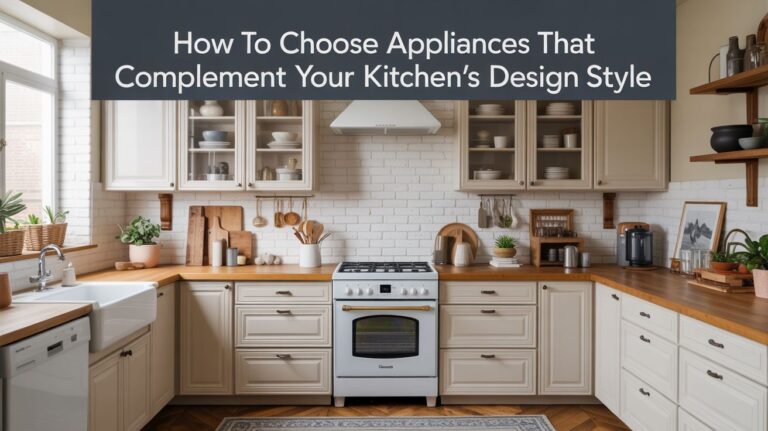Incorporating Natural Light Into Kitchen Design for Enhanced Mood and Function
I have been, or can be if you click on a link and make a purchase, compensated via a cash payment, gift, or something else of value for writing this post. As an Amazon Associate, I earn from qualifying purchases. Please read my full Affiliate Disclosure for more information.
To boost mood and function, place key work zones near strong daylight paths and align counters with the brightest wall for natural glow. Choose high-performance glazing and sunny yet controllable facades, with reflective finishes and light colors to bounce daylight without glare. Use layered lighting and dimmable controls to adapt brightness as sun shifts. Balance privacy with transparency through smart treatments, and pick sustainable materials that keep spaces cool. Want more details on optimizing this strategy? You’ll uncover them next.
Key Takeaways
- Position primary workstations near windows to maximize daylight exposure for mood and productivity.
- Use reflective surfaces and light colors to bounce natural light and brighten the kitchen without glare.
- Choose glazing and shading that balance daylight with energy efficiency and glare control.
- Align countertops and storage with brightest wall for optimal light exposure during tasks.
- Implement layered, dimmable lighting and transparent treatments to maintain daylight feel while preserving privacy.
Maximizing Window Placement for Daylight
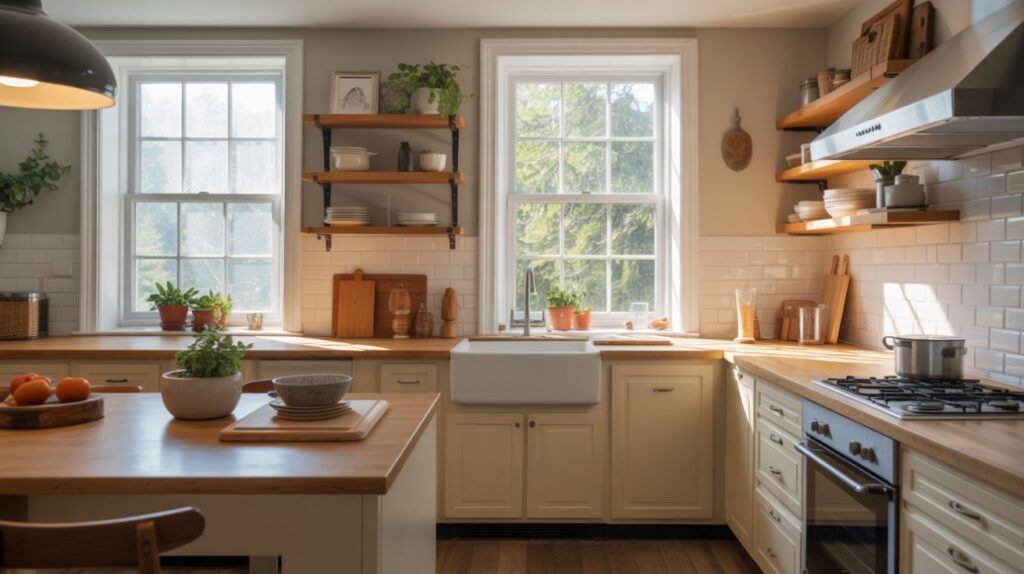
Maximizing window placement for daylight starts with understanding how room layout and orientation influence glare and warmth. You want positions that balance views, cross-ventilation, and consistent illumination throughout the day. Begin by mapping sink and stove activities to avoid direct glare during peak cooking hours, then align countertops with the brightest wall if possible. Favor southern or eastern exposures for steady daylight, while designing shading to prevent overheating. Consider window width and height to maintain privacy without sacrificing brightness. Prioritize window placement that supports daylight maximization, reduces artificial lighting needs, and enhances mood and function in daily kitchen tasks.
Glazing Options That Enhance Brightness and Efficiency
Glazing options that boost brightness and efficiency aren’t只是 about looking good—they control heat, glare, and energy use. You’ll explore window styles that maximize daylight while minimizing heat loss and solar gain. Consider glazing technology that reduces infrared transmission without darkening interiors, preserving color fidelity. Choose double- or triple-pane constructions with low-emissivity coatings for steady temperatures. Gas-filled gaps, tight seals, and proper spacers curb drafts and condensation. Sun-control options like selective tints or dynamic glazing can balance glare. Pair with operable panels for ventilation. Your goal: bright, comfortable kitchens that save energy without sacrificing clarity.
Reflective Finishes and Color Schemes to Amplify Light
Choose a reflective color palette that mirrors natural light to make spaces feel brighter and more open. Pair light-boosting finishes with clean, low-contrast surfaces to avoid dulling the glow. This combination sets the stage for a kitchen that feels instantly more luminous and inviting.
Reflective Color Palette
Reflective finishes and light colors work together to bounce natural illumination around the kitchen, boosting brightness without adding fixtures. You’ll choose a reflective color palette that maximizes ambient hues while keeping balance. Opt for light, cool neutrals and soft whites as the base, then introduce restrained pops of color in accents that mirror nearby scenery. Consider cabinetry, backsplashes, and countertops with subtle sheen to preserve cohesion. Use reflective surfaces sparingly to avoid glare, ensuring harmony with natural light. The goal is clarity: color choices that amplify daylight, elevate mood, and respect function without overpowering space.
Light-Boosting Finishes
Light-boosting finishes rely on a careful mix of reflective textures and light-friendly colors to maximize daylight without creating glare. You’ll magnify brightness by pairing glossy or satin surfaces with soft, high-contrast tones that bounce light across the room.
- Use reflective surfaces on backsplashes and appliances to multiply daylight.
- Choose color contrast strategically—light walls with slightly deeper accents to guide glare-free reflection.
- Favor matte countertops with subtle sheen in a cohesive palette to sustain luminosity without noise.
These choices create a balanced, breathable kitchen where light feel more abundant and tasks stay clear.
Building Zones: Balancing Task Areas With Natural Light
You’ll balance task areas with daylight by pairing work zones with appropriate light levels and glare control. Use zoned light strategies to tailor brightness for cooking, prep, and cleanup, while keeping sightlines clear to any natural sources. Plan layouts that maximize daylight—placing primary workstations near windows, with secondary tasks aided by reflective finishes and controlled shading.
Task Areas Light Balance
Task areas need balanced lighting that supports both preparation and cleanup without glare or shadows. You’ll align task lighting with ambient illumination to avoid harsh contrasts while keeping the overall mood calm.
- Position under-cabinet fixtures to illuminate counters evenly and reduce eye strain.
- Layer lighting so task areas get brighter focus without overpowering the room’s ambient glow.
- Use dimmable controls to adapt from daytime prep to evening cleanup.
This balance preserves clarity, enhances safety, and preserves mood. You’ll achieve readability and comfort by coordinating color temperature and fixture placement, ensuring task lighting remains functional, yet harmonious with the kitchen’s natural light.
Zoned Light Strategies
Zoned light strategies divide the kitchen into zones that work with natural light rather than against it, so task areas stay clear and comfortable throughout the day. You’ll map shadows and sunpaths, assigning workstations to optimize daylight without glare. Ambient layering adds depth by combining soft skylight with selected fixtures, so you’re never relying on a single source. Use smart dimming to adjust brightness as clouds shift or you move between tasks, preserving mood and focus. This approach minimizes energy use, reduces contrast fatigue, and keeps circulation areas visually calm. Result: intuitive, responsive lighting that supports efficient cooking and easy collaboration.
Layouts for Daylight
As daylight shifts across the room, layouts for daylight focus on pairing work zones with the sun’s path to keep tasks well lit without glare. You’ll align prep and cooking areas to receiving morning light, while cleanup zones tolerate afternoon shade. Cultural influences and historical trends shape how windows, doors, and shifts in interior walls guide rhythm, balance, and comfort. The goal is clarity, not clutter, so you design for sightlines, contrast, and energy flow.
- Position primary tasks along south-facing windows to maximize natural brightness throughout the day.
- Use reflectors and translucent screens to diffuse glare.
- Zone transitions align with the sun’s arc for consistent illumination.
Privacy, Energy Use, and Sustainable Design Choices
Privacy, energy use, and sustainable design choices can shape how much natural light you enjoy in a kitchen. You’ll balance privacy concerns with window placement, shading, and transparent treatments so daylight remains while you feel secure. Energy conservation guides choices like high-performance glazing, passive solar design, and skylight placement that minimize artificial lighting needs without sacrificing comfort. You’ll consider material reflectivity and color schemes to maximize daylight without glare. These steps support responsible consumption, curb energy bills, and maintain mood-boosting light. When aligned with practical privacy measures, you achieve a bright, efficient, comfortable kitchen that honors privacy and energy conservation.
Maintenance, Safety, and Long-Term Performance
Keeping a kitchen bright and functional over time hinges on thoughtful maintenance, safety, and long-term performance. You’ll protect light quality and functionality by following simple practices that preserve integrity maintenance and safety protocols. Regular checks prevent glare, heat damage, and mold, keeping spaces pleasant and efficient.
- Schedule periodic inspections of seals, hinges, and skylight caulk to maintain integrity maintenance and glare control.
- Implement clear safety protocols for cleaning, ladder use, and electrical outlets to minimize hazards.
- Track performance trends, noting any dimming or drafts, and address issues promptly to sustain long-term efficiency and mood benefits.
Conclusion
You’ll finish with a kitchen that feels brighter, calmer, and more productive. By prioritizing window placement, choosing light-welcoming glazing, and pairing reflective finishes with fresh color, you’ll amplify daylight without sacrificing energy efficiency. Balance task zones so daylight guides your work, while mindful privacy and sustainable choices keep costs down. Maintain safe, easy-care surfaces and reliable performance for the long haul. In short, design around light, and your space works smarter—and happier—for you.
